-
-
SPONSORED
-
Machining Centers
The term “machining center” describes almost any CNC milling and drilling machine that includes an automatic toolchanger and a table that clamps the workpiece in place. On a machining center, the tool rotates, but the work does not. The orientation of the spindle is the most fundamental defining characteristic of a CNC machining center. Vertical machining centers (VMCs) generally favor precision while horizontal machining centers (HMCs) generally favor production—but these are loose generalizations, and plenty of machining centers break out of them. Another common machining center type is the 5 axis machining center, which is able to pivot the tool and/or the part in order to mill and drill at various orientations.




Latest Machining Centers News And Updates
DMG MORI HMCs Reduce Energy Consumption
DMG Mori Co. Ltd. introduces the NHX 4000 and NHX 5000 4th Generation, designed for high-speed, sustainable production with reduced cycle times and energy consumption.
Read MoreSW North America Multispindle Machining Centers Boost Efficiency
SW North America’s BA W06-22 and BA 322i multispindle machining centers are well suited for diverse industries, including automotive, e-mobility, medical devices, aerospace, agriculture and construction equipment.
Read MoreIncorporating Automation into EDM
Adding automation to EDM can provide long periods of unattended machining or be used in a closed-loop cell, while EDM control features can automate electrode design and process parameters.
Read MoreSetting the Stage for Swiss Machining Success: Shop Tour Video
Nine machines, two machinists. What technologies have enabled Midway Swiss Turn to operate at this level of lean staffing? Find out in this shop tour.
WatchTracing Domestic Manufacturing’s History at the American Precision Museum
The American Precision Museum connects new generations to the story of domestic precision manufacturing. Find out how it’s bringing new chapters of that story to life.
Read MoreRigidity and Reliability More Than Double Aerospace Shop’s Revenue
By adopting a six-axis mill with a tripodal head and a pallet system, Omni Aerospace has cut its cycle and setup times for large parts, massively increasing its revenue.
Read MoreFeatured Posts
How to Succeed as a Small Swiss Shop: Top Shops 2025
Can small shops succeed with advanced machine tools and software? If so, how do they do it? Read on to learn the strategies that have helped Midway Swiss Turn, our 2025 Top Shops Honoree in Shopfloor Practices, thrive.
Read MoreWhere Manual Turning is as Valuable as CNC: Top Shops 2025
This year’s Top Shops Honoree in Machining Technology recently invested in both a flexible manufacturing system and a new manual turning machine. But why? Discover how both fit the shop’s success strategy in this article.
Read MoreVideo Tour: Inside the American Precision Museum
Where did precision manufacturing begin in the U.S.? What led to it, and how has it changed? Join us on this tour of the American Precision Museum, where Executive Director Steve Dalessio tells us the story of precision manufacturing’s birth — right from the place where it happened.
WatchWorkholding, ESOPs and AMRs: Building Midwest Job Shop Success
A to Z Machine’s True North mission statement defines an aim to become the best employer and supplier in the region. But what policies and technologies support this mission? From AMRs to Zero Point clamping, find out below.
Read MorePallets Provoke a State of Flow
Can a machine shop achieve the effortless action of musicians lost in their craft? Continental Machining Company’s president thinks so, and he's proving that manufacturing flow is more than just moving material.
Read MoreConsiderations for Purchasing Your First Machining Center
Modern five-axis machines are built to hold tolerances accurately without requiring the many setups of a normal three-axis CNC machining center.
Read MoreFAQ: Machining Centers
What is a vertical machining center?
Most machining centers on the market feature numerical control (CNC) and serve more than one purpose. Many can perform combinations of operations such as milling, drilling, boring, tapping and reaming in a single setup. Machining centers come in three general types: horizontal three-axis, vertical three-axis and five-axis machines (four- and six-axis machines exist, but are less common).
For a vertical machining center, the X-axis controls left-and-right movement, parallel to the workholding surface; the Y-axis controls front-and-back movement, perpendicular to the X- and Z-axes; and the Z-axis controls up-and-down movement. Most machines use a fixed spindle and a moving table, or a fixed table and a moving spindle. Spindle rotation is never considered an axis.
Five-axis (and four-axis and six-axis) machines introduce additional axes that enable the table or spindle head to rotate and pivot. The A-axis involves X-axis rotation, while the B-axis is paired to the Y-axis and the C-axis is paired to the Z-axis.
What is a horizontal machining center?
Machining centers come in three general types: horizontal three-axis, vertical three-axis and five-axis machines (four- and six-axis machines exist, but are less common).
Horizontal and vertical three-axis machines differ primarily in the inclination of the spindle, with the spindles of horizontal machines parallel to the surface of the machine table and the spindles of vertical machines perpendicular to the surface, although individual constructions vary widely to support different applications.
What is machining center accuracy and repeatability?
Accuracy and repeatability are both vital, but these specifications can be especially difficult to determine because different manufacturers use different definitions. In general, there are three standards for accuracy: unidirectional forward, unidirectional reverse and bidirectional (which is the average of the two). Repeatability — which is the distance between accuracy samples, tested over the full range of data points — generally has four standards: forward repeatability, reverse repeatability, bidirectional repeatability and scatter.
“Lost motion,” also called “mean reversal error,” is the difference from center found when comparing marks made with forward and backward repeatability. Data collection typically repeats processes seven times, then creates a bell curve of results, calculating both the standard deviations and the mean. Different measurement standards use the standard deviations in different ways.
What is unbalance?
Standard adapters and tooling are normally satisfactory at spindle speeds up to 8,000 rpm. At faster speeds, specially balanced tooling can be critical for high tolerances and surface finishes.
Unbalance is a tool’s mass times its eccentricity (which is the distance from the tool’s center of rotation to its true center of mass). Eccentricity is measured in microns and tool mass in kilograms, so unbalance is measured in gram-millimeters. ISO 16084 is the standard for setting targets for tool and toolholder balance.
To evaluate unbalance in processes, users can perform trial runs one at a time with tools balanced to a variety of different values. Such an evaluation might start at an unbalance of 10 g-mm, then progress through a series of increasingly balanced tools until it achieves proper tolerances or accuracy and surface finish fail to improve any further.
How do you find eccentricity?
Eccentricity is the distance from the tool’s center of rotation to its true center of mass. Eccentricity is measured in microns and tool mass in kilograms, so unbalance is measured in gram-millimeters.
What is a rotary encoder?
Machine tools use linear and rotary encoders to measure their own movements and stay on target. There are three types of encoder contacts — photoelectric (also called optical), magnetic and mechanical — but photoelectric encoder contacts are the most common.
Rotary encoders measure rotational movement drives, but spindles and recirculating ballscrews can also enable them to measure linear movements. Rotary encoders can be incremental or absolute.
Incremental rotary encoders have output signals that are evaluated by electronic counters that measure “increments.” For general length measurement applications — particularly the measure of slide movements using a recirculating ballscrew as the scale — shaft encoders that incorporate digitizing electronics are standard.
Absolute rotary encoders derive angular positional value from the pattern of a coded disc that provides values immediately after power switches on. The Gray coder and coders which use natural binary are most common, with many modern computer programs using the binary system to support high speeds.
How do you improve machining center accuracy?
1. Know The Spindle
2. Measure The Process Instead Of The Part
3. Raise The Bar On Drawbar Attention
4. Control Chatter
5. Inspect With A Reference
Machining Centers Supplier Categories
- Graphite Milling
- Material Removal Automation
- Multi-Machine Tool-Storage Systems
- Vertical, Five-Axis
- Assembly & Testing Automation
- Boring
- Material Forming & Fabricating Automation
- Machining Flex Lines
- Vertical, Up to Four-Axis
- Planer, Gantry & Bridge Type Milling
- Universal
- Bed-Type Milling
- Nano & Micro Machining
- Universal Milling Machines
- Pallet Systems
- Knee & Column Milling, Non-ATC
- Ultrasonic
- Horizontal, Five-Axis
- Horizontal, Up to Four-Axis
- Machining Cells & FMS
- Automated for Material Joining
- Jig Boring
















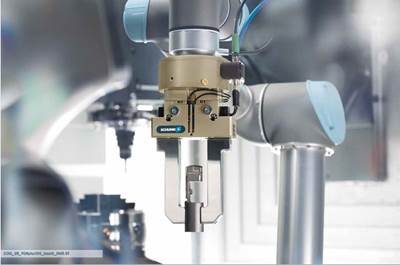
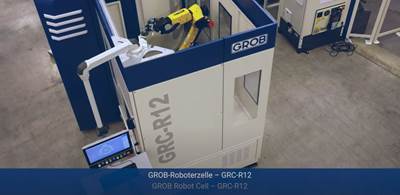

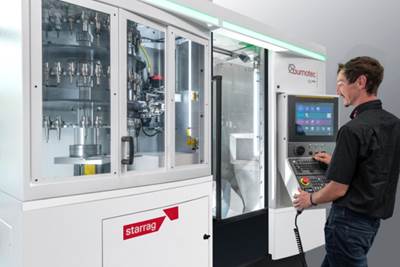


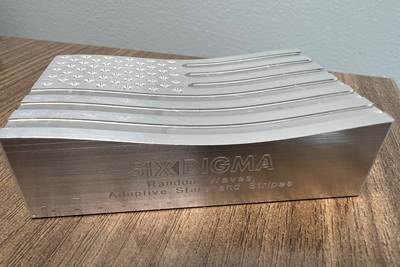
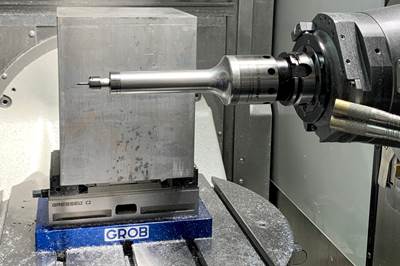




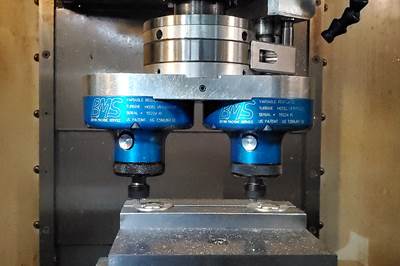



.png;maxWidth=300;quality=90)




























